Understanding the role of large-scale digital platforms in India
Submitted Mar 3, 2022
India Stack
Since 2009, the government of India has been building the Unique Identification Authority of India (UIDAI), which was headed by Nandan Nilekani, the co-founder of Infosys (DiBiasio, 2020, DigFingroup.com). It was under UIDAI that Aadhaar was created, which is seen by some as a revolutionary attempt to usher in a new era of digital productivity in the country, specifically in the finance sector (Holla, 2020). However, critics argue that the implementation of Aadhaar comes at the cost of an individual’s privacy (Banerjee & Sharma, 2019) and exists merely for the benefit of larger players already existing in the market (Dharmakumar, 2017, The Ken).
Since the inception of Aadhaar, the government has promoted the concept of single identification number to enable smoother availing of services, schemes and policies of the government (CARRIÈRE-SWALLOW et al, 2021). The overarching aim is towards the digitizing of more services and the increase of an online presence by individuals in the economy. However, studies have highlighted that the online implementation of such services has also resulted in difficulties of marginalised groups accessing essential services, leading to issues such as fraud and identity theft, leading to corruption in availing welfare schemes (Khera, 2019).
UIDAI argues that through the introduction of Aadhar there has been a push for development of the finance sector in the country (Raghavan et al, 2019). Government policies and schemes such as demonetisation (PTI, 2021Times of India,; Gupta & Aursewald, 2019, Harvard Business Review,) and the Pradhan Mantri Jan Dhan Yojana (CARRIÈRE-SWALLOW et al, 2021) have been presented as further extending the digitization and development of finance. The creation of some of these products and services were done through the platform known as India Stack, a set of APIs that allows government, businesses and individuals to utilise the digital infrastructure to enable better service delivery (Indiastack.org).
The platform also aims to promote innovation in the country with the creation of local digital solutions such as Samaadhaar and True Scholar (Fintech Futures, 2018). PWC estimates that 1.26 billion Indians are registered on the database (DiBiasio, 2020, DigFingroup.com). Critics have argued that India Stack is run by the private entity iSpirit yet it uses public sector information for the building of services through their platform (Dharmakumar, 2017, The Ken).
India Stack currently has five main products built through its systems Aadhaar(2010), Esign(2015), UPI(2016), eKYC (2012) and digilocker(2015)(Fintech Futures, 2018). Of which Aadhaar, which includes biometric data of the users, is seen as the bottom layer for all the products created on IndiaStack.
Indiastack argues that the services provided through the Aadhaar datasets can lead to further innovation and digitisation of the Indian markets. Currently, eKYC (Know Your Customer) remains one of the largest KYC databases in the world and it is estimated that through it the government of India has saved over $7Billion in 2018 (Fintech Futures, 2018). Currently, iSpirit has four predominant layers through which they create their products governed by different Government entities.
| Layer | Product | Governing body |
|---|---|---|
| Consent Layer | Open Personal Data Store | Reserve Bank of India |
| Cashless Layer | UPI (Unified Payments Interface) | National Payments Corporation of India |
| Paperless Layer | eSign, Digilocker, e-KYC | Department of Electronics and Information Technology |
| Presenceless Layer | Aadhaar, Mobile Aadhaar | Unique Identification Authority of India |
However, one of the biggest arguments given by the advocates of India Stack is the individual’s access to avail government schemes and other benefits, and smoothen the process to avail financial aid such as loans, enabled by multiple information points under the stack (Dharmakumar, 2017, The Ken). IndiaStack advocates argue that through a clearly digitised presence, individuals shall be able to avail a wider variety of financial aid faster as the documentation will be clearly observed.
Aadhaar, since its inception, has been object of much controversy. In January 2018, the Tribune reported that for a mere 500 Rupees one could purchase Aadhaar data through anonymous sellers over WhatsApp (Khaira, 2018, The Tribune). Similarly, in a case study in Jharkhand, researchers saw that the Aadhaar system was prone to error, leading to the switching of bank accounts and financial benefits between two individuals with the same name in the district (Naryanan & Dhorajiwala, 2019). These cases highlight the problems critics have observed with Aadhaar. However iSpirit continues to believe that the eventual improvements of the stack can promote further growth and innovation in the country. Journalists, looking at the advocates for the Aadhaar mandate, have found that the biggest supporters (and possibly beneficiaries) of the stack continue to be large companies already existing in the market (Thaker, 2018, Caravan Magazine).
Nevertheless, while trying to understand the role of innovation in the Indian market, it is important to understand how tech based companies and varied stakeholders have responded to the push by the government for the use of IndiaStack. The government also plans on expanding the stack to cater to various sectors in the country. Specifically, the government has already begun efforts to do so in Agriculture, Health, Education and Finance.
AgriStack
In 2016, the Modi government announced a goal to double farmers’ incomes by 2022 (PTI, 2021, The Economic Times). A committee was set up to usher in this new goal leading to further investments towards the agrarian sector such as increased budgetary allocations and the implementation of further policies such as the PM-KISAN (PTI, 2021, The Economic Times). In addition to the financial packages that farmers could avail there has been much investment towards the digitization of agriculture in the country, including the big push for the creation of Agri Stack (Kapil, 2021, Down To Earth Magazine). Currently, the Indian government is finalising the “India Digital Ecosystem of Agriculture” (IDEA) that will provide a clear guide for the creation of Agri Stack (India Education Diary, 2021).
Like India Stack the goal of Agri Stack is to provide a large database of farmers’ information, including a unique digital ID for farmers, with data regarding land profiling and other data points (Mohanty, 2021, News18.com). This data is collected through other schemes farmers have availed, including the 11.5 crore landholding farmers who have availed schemes under PM KISAN (Mehrotra, 2021, Scroll.in). In doing so, the government argues that immediate assistance may be provided to farmers and smoother access to resources such as information regarding pest control, soil protection will enable farmers for better produce (Mohanty, 2021, News18.com).
According to Kapil, the same problems observed in India Stack continue to exist in Agri Stack with the focus on large players in the ecosystem to gain upper hands in the design process. Currently, there has been a Memorandum of Understanding between Microsoft and the Department of Agriculture, Cooperatives and Farmers’ Welfare to begin a pilot effort in 100 villages in the state of Haryana, Uttar Pradesh, Madhya Pradesh, Gujarat, Rajasthan and Andhra Pradesh (Kapil, 2021, Down To Earth Magazine).
Indigeneous farmer initiatives have argued that there must be more focus on providing solutions locally sourced and not depending on players like Google or Microsoft to produce such a framework and design (Mehrotra, 2021, Scroll.in). Especially, as the overarching goal also allows for the creation of digital bazaars or online marketplaces, financial tech enabled services such as loan and insurance offerings, precision technology for crop analysis and information and advisories (Mehrotra, 2021, Scroll.in).
The government has currently partnered with organisations such as Star Agribazaar, Patanjali, ESRI India and Amazon Web Services in addition to Microsoft (Kapil, 2021, Down To Earth Magazine) though as observed by critics the original goal of enabling local entrepreneurs and farmers themselves weren’t included in the preparation of the work done for Agri Stack (Mohanty, 2021, News18.com, Mathew, 2021, National Herald India). Additionally, critics have argued that the MOUs signed by the private players also constitute a limitation of liability clause that enable further lack of accountability by the private entities while approaching the work done for the stack (Kapil, 2021 Down To Earth Magazine).
Farmer groups argue that the Agri Stack model runs parallel to the new farm laws that look towards protecting larger conglomerates interests over farmers’ wellbeing (Mohan, 2021, The Wire). Farmers state that data regarding weather patterns, rainfalls and other measures already are collected by the government but are now sold to private partners to enable the creation of tools like ESRI India’s GeoHub that looks at geo satellite data (Kapil, 2021, Down To Earth Magazine).
The Internet Freedom Foundation writes that in an effort to produce a wide ranging data set for farmers to access benefits the inverse could also be true, with credit lending organisations using a farmer’s data to provide credits with extremely high interest rates (Internet Freedom Foundation, 2021).
Currently, India is said to have the third largest funding in the world for Agritech companies (Ganguly & Gulati, 2021, Financial Express). In 2019, India’s Agritech market size was estimated to be $204 million dollars with at least 50 startups receiving funding annually, yet the actual market share of these startups is estimated to be merely 1 percent of the total market potential (Mehrotra, 2021, Scroll.in).
Thus there is much at stake towards the digitization of the sector and the efforts by the government to create a large scale digital public infrastructure for all stakeholders to actively take part in.
Health Stack
Post the success of UPI, the government of India wanted to duplicate such efforts in the health ecosystem of the country. Thus in 2018, the government of India announced its plans to implement the National Digital Health Mission (NDHM). Under this mission, unique health IDs will be created for citizens by the Ministry of Health and Family Welfare. These IDs will be linked to the citizens Aadhar card numbers. The NDHM subsumes the work done by Ayushman Bharat, with 500 million individual’s data. This data includes all health-related data, such as prescriptions, diagnostic data, reports, etc (Majumder, 2021, The Wire). It is to be stored in a federated manner, which means the data will be locally stored in hospitals and clinics as digital registers (MK, 2021, The News Minutes).
The National Health Stack (NHS) is a cloud based service which will contain all of the data being used in the NDHM. It combines data from public health programs as well as socio-demographic data systems (Paul, 2018) and aims to “bring all the health verticals existing at the central and state levels under one roof” (Bajpai & Wadhwa, 2020). This stack will form the building blocks on which the Pradhan Mantri-Rashtriya Swasthya Suraksha Mission (PM RSSM) will be built. The PM RSSM is a government-funded health insurance scheme which will subsume the Rashtriya Swasthya Bima Yojana (RSBY) and the Senior Citizen Health Insurance Scheme (SCHIS) (Lahariya, 2018).
The NHS will help to streamline people’s access to various healthcare services (Bajpai & Wadhwa, 2020). However, the NHS and NDHM can only be successful depending on its adoption by the government at various levels as well as public and private entities involved in healthcare (Bajpai & Wadhwa, 2020).
The biggest concern regarding the NHS is ensuring data privacy of citizens. Digital rights activists have argued that making health records accessible via open APIs can be very dangerous. While the NHS Consultation document states that Health Data Fiduciaries will ensure that the individual’s consent is taken before any of their data is extracted, it is not clear whether these Health Data Fiduciaries will be private or government entities (Narayanan, 2018, Scroll.in).
Given the highly sensitive nature of health data, if the NHS is not implemented with necessary privacy protocols and best practises in place, citizens’ safety will be at stake. Additionally, the availability of authentic data is also something that is lacking in public health research, according to health activists. Data is often fudged, even at the point of collection, and this digital health infrastructure will not be able to solve this issue (Narayanan, 2018, Scroll.in).
In 2018, the Digital Information Security in Healthcare Act or DISHA was drafted and aims to provide citizens with the rights to privacy, confidentiality, and security of their health data. According to the draft, citizens have the right to provide or refuse consent for the use and collection of their health data (Luniya, 2021, Mondaq.in). It also allows certain healthcare establishments such as hospitals and medical professionals to collect and store such data. However, it is unclear whether or not the NHS will be covered by DISHA, and the Act is yet to be passed (Narayanan, 2018, Scroll.in).
The NHS API’s are being tested by various healthcare organisations across the country. Like the boost in the fintech economy after the introduction of UPI, it is envisioned that the healthtech industry too will experience such a boost (Anupam, 2020, inc24.com). While healthtech only accounts for approximately 1% for the broader healthcare sector (as of 2020), it is expected to grow at 39% compounded annual growth rate (CAGR) and will be valued at $50 billion by 2023. This industry was valued at approximately $1.9 billion in 2020 (IAMAI and Praxis, 2020).
If the NHS is implemented with privacy regulations in place, it can prove to be a game changer for the healthtech industry. However, without proper implementation, the NHS can be disastrous in terms of security against the misuse of citizens’ health data and other privacy-related issues.
Edu Stack
Over the last few years, the Edtech industry has grown exponentially in India. This growth has been due to various factors such as an increase in internet usage among a wider population, access to smartphones and computers, and also the COVID-19 pandemic. Since the onset of the pandemic and its resulting lockdown in March 2020, schools and colleges have been shut for the most part. This resulted in a drastic shift from traditional, in-person teaching methods to an adoption of online learning technologies. As a result, various Edtech companies in India have seen massive growth, especially since the start of 2020 (Chikodi, 2020, Tata Elxsi).
Byju’s, Unacademy, Vedantu, Eruditus, and UpGrad are the five Edtech Unicorns in India as of September 2021. According to Statista, the Edtech market in India was valued at $2.8 billion in 2020 and is expected to grow rapidly to $10.4 billion by 2025 (Statista, 2021). However, due to overcrowding, inadequate capital, or poor business models of new start-ups in the Edtech industry, many have found it difficult to survive (Kundu, 2021).
The government of India has been supporting this boost in the Edtech industry through various initiatives such as SWAYAM (study webs of active learning for young aspiring minds), Diksha, e-pathshala, and NIOS (National Institute of Open Schooling). These initiatives promote online learning and are developed and run by the Ministry of Human Resource Development and the Ministry of Education (Kundu, 2021).
In addition to this, the government of India has also introduced the National Education Policy (NEP) in 2020. This policy is seen as a game changer for education and sectors associated with it (MN, 2021, The Times of India). Apart from provisions specific to the schooling system, there is also a push towards innovating education using technology. Edtech solutions will be used to support various skill-building programs as well, which are proposed by the NEP (Mruthyunjayappa, 2021, Ed Tech Review). It is also envisioned that there will be a set of APIs under India Stack for the education sector (iSPIRIT).
Hence, the Edtech industry is on a steady rise in India and has been revolutionising the education sector. People have also been increasingly shifting from traditional modes of education to online learning well beyond their school and college years.
Beckn
Beckn was founded by Nandan Nilekani, Pramod Varma, and Sujith Nair in 2019. Essentially, the Beckn protocols are a set of protocols that offer a range of services to businesses that they can use to create a digital presence for themselves. For instance, it can be used by shops to create their own digital inventory which can be viewed on numerous platforms by customers (Matthan, 2020).
If Beckn is successful, it would mean that prices for services will drop, as will the large profits earned by companies such as Swiggy, Uber, etc. This model is similar to that of UPI, wherein one can access payment apps such as Paytm, PhonePe, and Google Pay by just using the UPI network (Jain, 2021, Financial Express).
This open system will help in decentralising existing industries and support the growth of new start-ups (Matthan, 2020, Live Mint). The Beckn Foundation also encourages co-creation and innovation among the participants of the ecosystem using their protocols (Beckn Foundation). This ecosystem will enable consumers to access services from a mix of private and public organisations with ease.
The key features of Beckn include built-in redundancy, decentralisation of its governance, and a layered architecture. The process to use Beckn is such that the Beckn network receives the users’ requirements and the Beckn Providers respond with relevant services. This information is then passed on to the user (Verma, 2020, Medium.com).
While India Stack is aimed at creating APIs to support the healthcare, education, finance, and agriculture sectors, Beckn protocols can be used to enable the discovery of businesses by any consumer application and is maintained by an open community. Additionally, Beckn also engages with governments and civil societies (Beckn Protocol).
Comments
Hosted by
Deep dives into privacy and security, and understanding needs of the Indian tech ecosystem through guides, research, collaboration, events and conferences. Sponsors: Privacy Mode’s programmes are sponsored by:
more



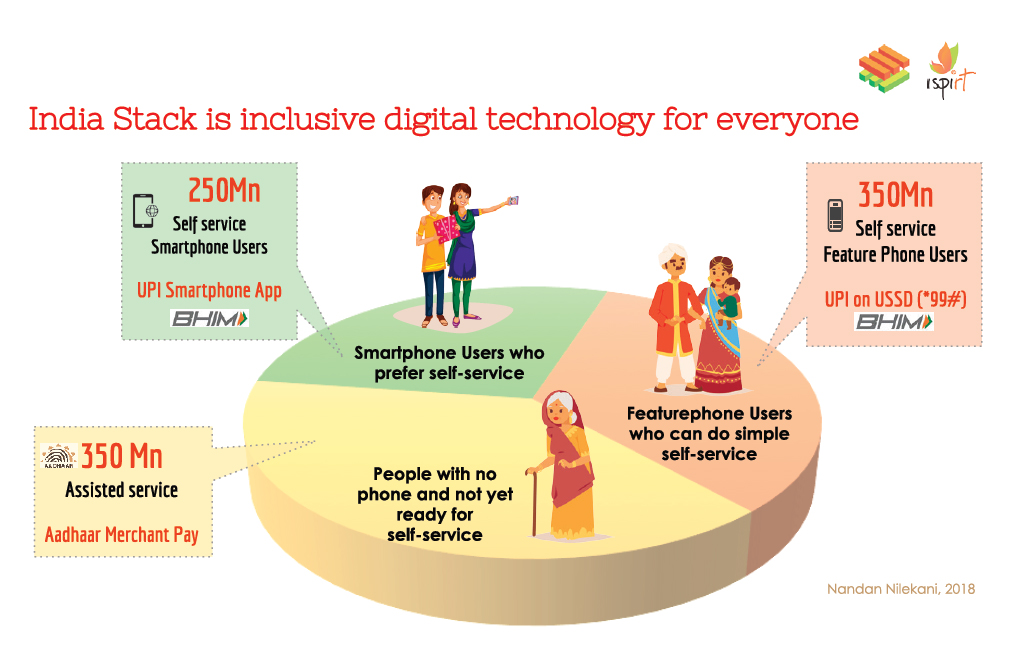
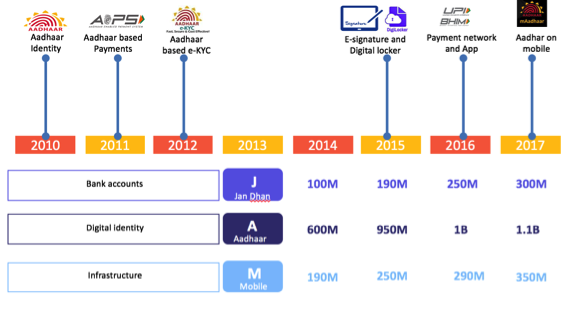
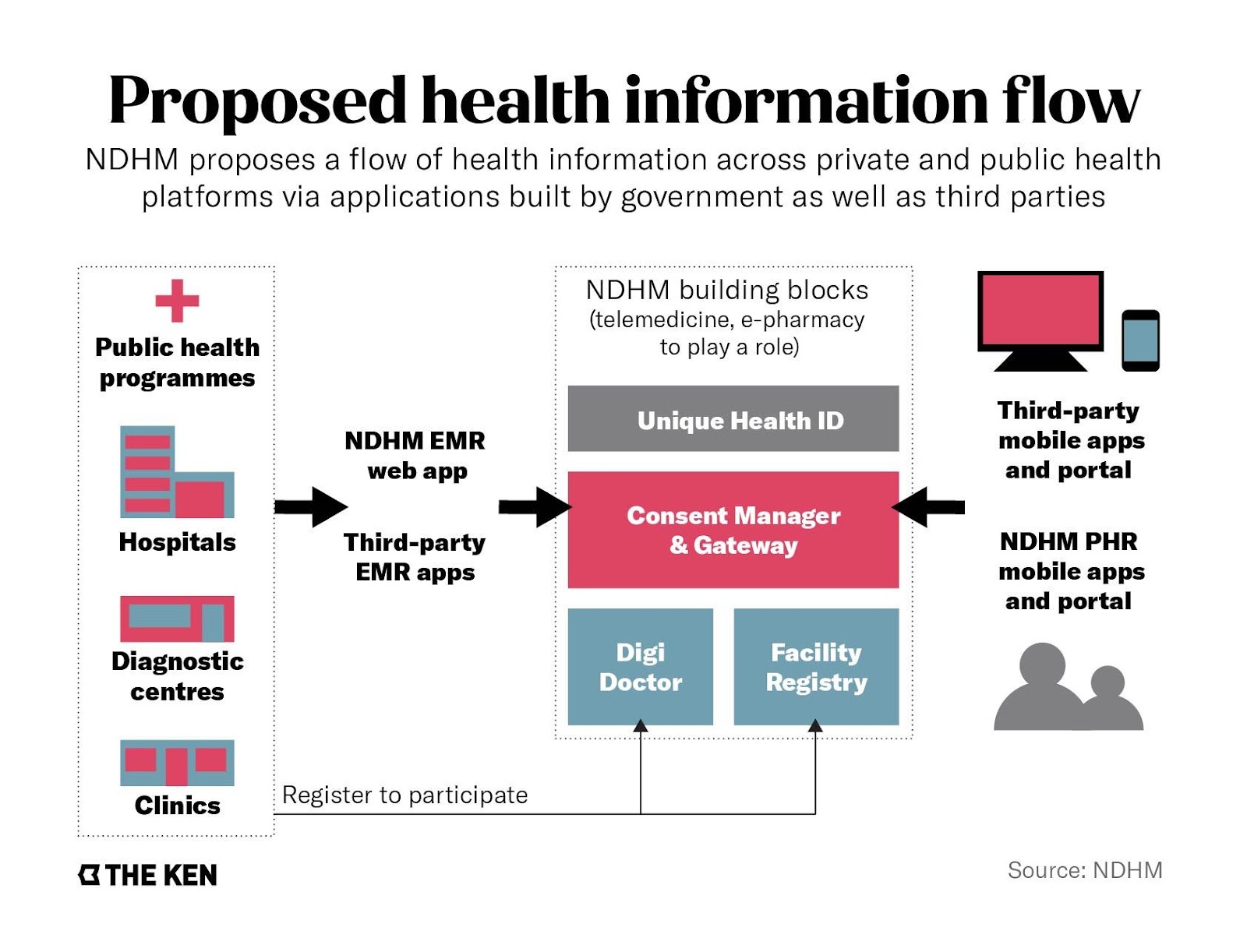
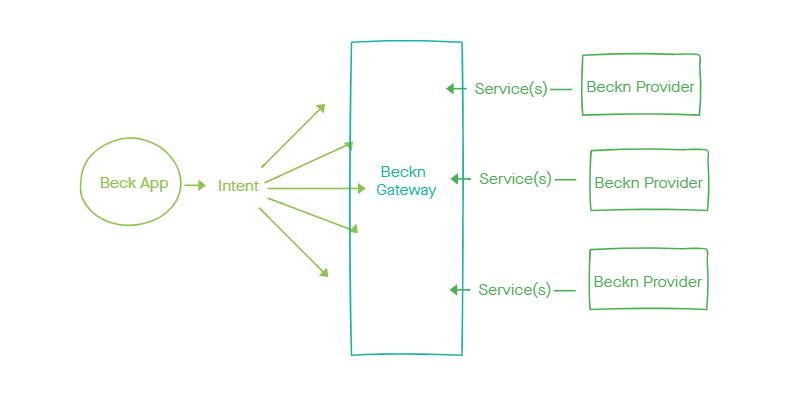
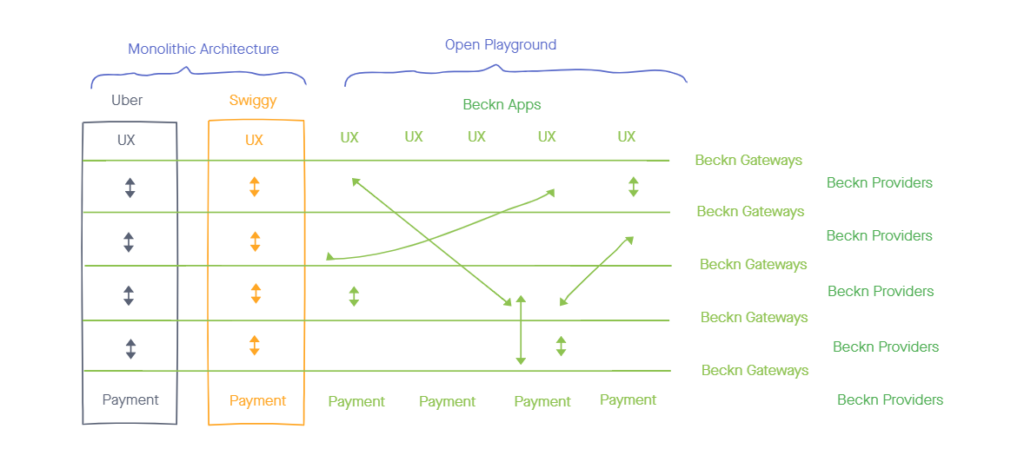
{{ gettext('Login to leave a comment') }}
{{ gettext('Post a comment…') }}{{ errorMsg }}
{{ gettext('No comments posted yet') }}